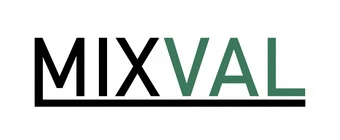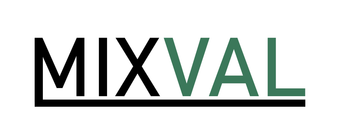It appears that your cart is currently empty
Cash Counting Terminology
Glossary of Terminology Used in Cash Counting
For those unfamiliar with the cash counting machines and industry --whether you are new to the market or simply wanting to brush up on your game-- the words found throughout the web may be a bit confusing or frustrating. Having to stop mid-sentence and look up “what does MG stand for + cash counting” can be a pain in the neck, and can pull you off your track, so you may have to re-read some of the data you already read to get back on-track.
In this quick blog we simply want to review some of the most common words, abbreviations, acronyms, and phrases that are used when it comes to discussing cash counting machines. With this information added to your arsenal, you will be ready for any blog, article, product, or conversation about money handling systems that may come your way.
These terms will be alphabetized, and have short explanations for how they are used, in addition to the basic definitions, so you can gain a true understanding.
-
BPM - An acronym that means “bills per minute”. This phrase is used to notate the speed at which a cash counting machine operates. It is usually written in lower-case “bpm” but may sometimes be seen in all caps “BPM”.
-
CAD - An acronym that stands for the Canadian dollar, which is the currency used in Canada. Also sometimes written as “Can$” when proceeding a number.
-
CIS - An acronym that stands for “Contact Image Sensor”. This is a feature used in some money counting machines. It acts as a form of bill recognition and counterfeit detection, determining what the value of a specific bill is by scanning it. This feature enables the cash counter to recognize denominations.
Counterfeit Detection - A feature that offers one or more functions that look for the security measures that are included in banknotes that help differentiate between authentic and fraudulent bills. For example, watermarks, magnetic threads and inks, ribbons, material check, etc.
-
Denominations - Refers to the value of individual bills.
-
IR - An acronym that stands for “Infrared”. This scanning feature exposes security markings that are not visible to the naked eye and are only visible when placed under an infrared light source. Some infrared-reactive features of bills may either reflect or absorb the light. Money counting machines with infrared technology use sensors that detect the presence of both types of infrared inks, allowing them to identify whether or not the currency passed through the system is legitimate. Also called “infrared scanning” or “infrared authentication”.
-
MG - An acronym that stands for “Magnetic Ink Verification”. Magnetic ink verification is a counterfeit detection method that detects tiny traces of iron particles in the ink characters printed on US banknotes. MG is almost always used in combination with IR, rather than as a stand-alone counterfeit detection method. Every bill that the US Federal Reserve prints has its own magnetic signature that can be read. If the magnetic properties in the ink are not detected when run through a capable machine, the counterfeit detector will flag it as a failed bill that is suspected of being counterfeit.
-
Mixed Money - This phrase indicates that a stack of bills can have various denominations and not require pre-sorting before running through a counting machine. Stacks mixed with any variety of bill values are counted accurately.
-
MR - An acronym that stands for “Magneto-Resistive”. This is a sensor that scans for magnetized portions of the bills, and acts as a counterfeit detector. MR is almost always used in conjunction with MT.
-
MT - An acronym that stands for “Magnetic Thread”. This is a sensor that scans for magnetic threads that are woven into the fabric of bills. Despite their look and feel, USD bills are ot made of regular paper; they are made of a 75% cotton and 25% linen blend. MT is almost always used in conjunction with MR.
-
MXN - An acronym that stands for the Mexican pedo, which is the currency used in Mexico. Also sometimes written as “Mex$” when proceeding a number.
- Serial Number - Every banknote (or bill) has a unique, 11-digit serial number printed on it. Serial number tracking is used by cash counting machines in the case of an audit.
-
Size & Thickness - This phrase refers to the precise dimensions of a banknote. USD bills are 2.61 inches high and 6.14 inches wide with a thickness of 0.0043 inches. When a money counting machine has this counterfeit detection feature, it can check each bill for precise length, width, and thickness to determine its efficacy.
-
Thermal Printer - A fast, ink-free method of printing that is used to produce serial number logs.
-
USD - An acronym that stands for the United States Dollar, which is the currency used in the United States of America. Also sometimes written as “$” when proceeding a number.
- UV - An acronym that stands for “Ultraviolet”. Ultraviolet light held over money and used as a counterfeit detection measure, revealing hidden markings, watermarks, ribbons, and images that are not visible on bills under normal lighting. It is the most common form of counterfeit detection.


0 comments